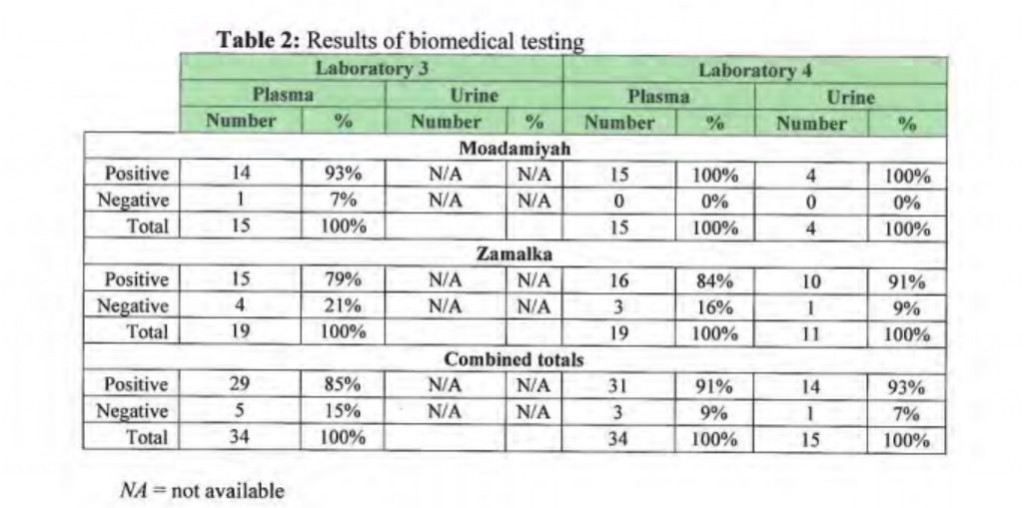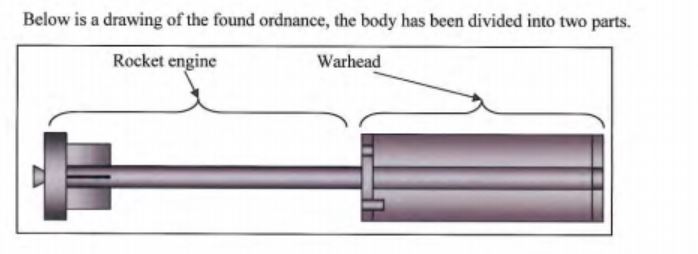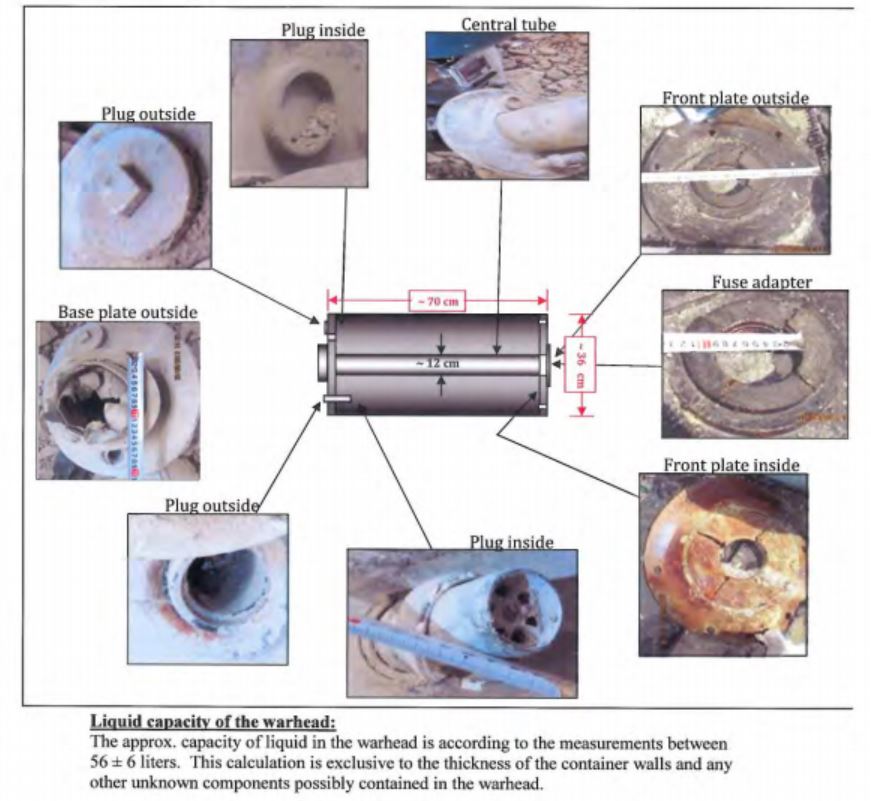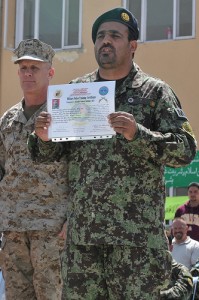Working Thread: UN Chemical Weapon Report on Syria Released
The UN has finally released its report (pdf) on the analysis of both human and environmental samples relating to the chemical weapon attack in the Ghouta area of Syria on August 21. The report finds unequivocal evidence of sarin in blood, urine and environmental samples.
A total of 36 primary victims and first responders who were exposed were interviewed. Sixteen of them were from Moadamiyah and twenty were from Zamalka. Seventy eight percent of them lost consciousness, 61% had difficulty breathing and 42% had blurred vision. Thirty four of the thirty six had blood samples taken (two refused) and 15 showing the most severe symptoms submitted urine samples. The materials were sent to two separate laboratories for analysis:
Rockets that could have delivered the chemical agent were found at some sites. At least one was capable of carrying up to 50 liters of liquid. Schematic of intact rocket:
The engine end was exposed at the impact site:
The warhead:
But of course, these inspections came on August 26 in Moadamiyah and August 28 and 29 in Zamalka, so 5 to 8 days passed between the attack and the analysis. The key point to keep in mind when considering the rocket evidence is this:
People had plenty of time to move things around before the UN inspectors came onto the site. The possibility that evidence has been manipulated cannot be ruled out.
My first impressions from the report are that it is without question that the people interviewed and who submitted samples were indeed exposed to sarin. How it was delivered is another question entirely. Rockets were found in the vicinity where people were exposed and environmental samples, including from the rockets themselves, showed evidence of sarin, but it is impossible to conclude the rockets definitely delivered the sarin. It is impossible to rule out sarin being put onto the rocket debris after impact.
I’ve only skimmed the report, please consider this a working thread and share any findings in comments.







